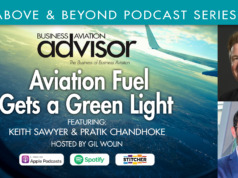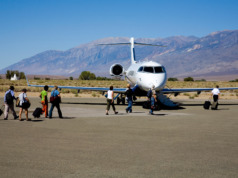More than 80 years ago, Walt Disney Productions popularized the notion of flying elephants with the release of its animated classic Dumbo, a story of a pachyderm that was born different – with oversized ears. Naïve, lonely, easily frightened, but well intended, Dumbo eventually but unexpectedly evolves to be a successful aerial circus performer. The takeaways from the simple but classic story are many, and close the loop on the numerous dangers of misperception, misunderstanding, and stereotyping.
When people on Main Street think of business aviation, what are their perceptions? Are they positive, negative, or indifferent? How many people are even aware that our industry even exists? Do they care? The public image of business aircraft – and by extension the aircraft’s owners, users, and operators – is like an elephant in the room – something we know exists but that is too big or perhaps too dangerous or misunderstood to address. In Dumbo, the young elephant was confronted with taunts and opposition, but eventually grew strong and overcame misunderstanding with courage and confidence. In the film, detractors among the public came around to accept Dumbo and eventually to cheer the courageous elephant onwards – and upwards.
As people who own, use, and operate business aircraft, how should we think – and more importantly, what might we do to overcome – public misconceptions about business and private aviation? Some recent flight tracking events and news media coverage have been less than flattering. France’s federal ministers of transport and of the environment are calling for more rigorous regulation and higher taxation of private jet travel, ostensibly to limit perceived frivolous behavior and to cut carbon contributions to climate change. Opposition parties in France have even been debating an outright ban on private jets in the country, even though France has a large and dynamic civil aerospace industry and is a hub of business aircraft activity in the Euro Area.
At the same time, and with the approval of the European Commission, French domestic airline flights recently have been banned between cities where train journeys can be accomplished in less than 2.5 hours. Further fueling the flame are high-profile outbursts of flight shaming, something that has become in vogue in parts of Europe in recent years. Images of protesters blocking access to FBOs and occupying ramps where business jets are parked have become disturbingly commonplace. Across the Atlantic and in another nod to global culture wars, the Canadian government levied a 10% luxury tax on private aircraft, car, and boat sales in September despite the country’s position – much like France’s – as a civil aerospace leader with one of the world’s largest fleets of business aircraft.
While business jet flight shaming has been less in vogue here in the U.S., recent developments include numerous reports of “wasteful” repositioning flights, real-time flight tracking of Elon Musk and other celebrities, and the less-than-flattering publication of fuel burned per passenger on business jet routes.
As a business aircraft owner, user, or operator, what can you do to improve the public perception of your flight operations, and by extension, the industry? For starters, you might consider the following:
- Operating with sustainable aviation fuel (SAF)
- Purchasing carbon offsets to reduce the environmental impact of your flight operations
- Working with business aircraft product and service suppliers that follow environmental best practices
- Ensuring your organization is invested in philanthropic programs that reflect your commitment to corporate social responsibility
While investigating that next new business opportunity, closing that deal, or meeting new people and discovering new places, business aviation is an invaluable asset. You and your ownership, use, or operation of a business aircraft need not be misunderstood. Nor should you, like Dumbo, have to rely on a magic feather to have the courage to fly.
Rolland Vincent is President of Rolland Vincent Associates, an aviation and aerospace market research, forecasting, and strategic planning firm. His nearly 40 years of experience includes work with manufacturers, commercial operators, and international organizations.






